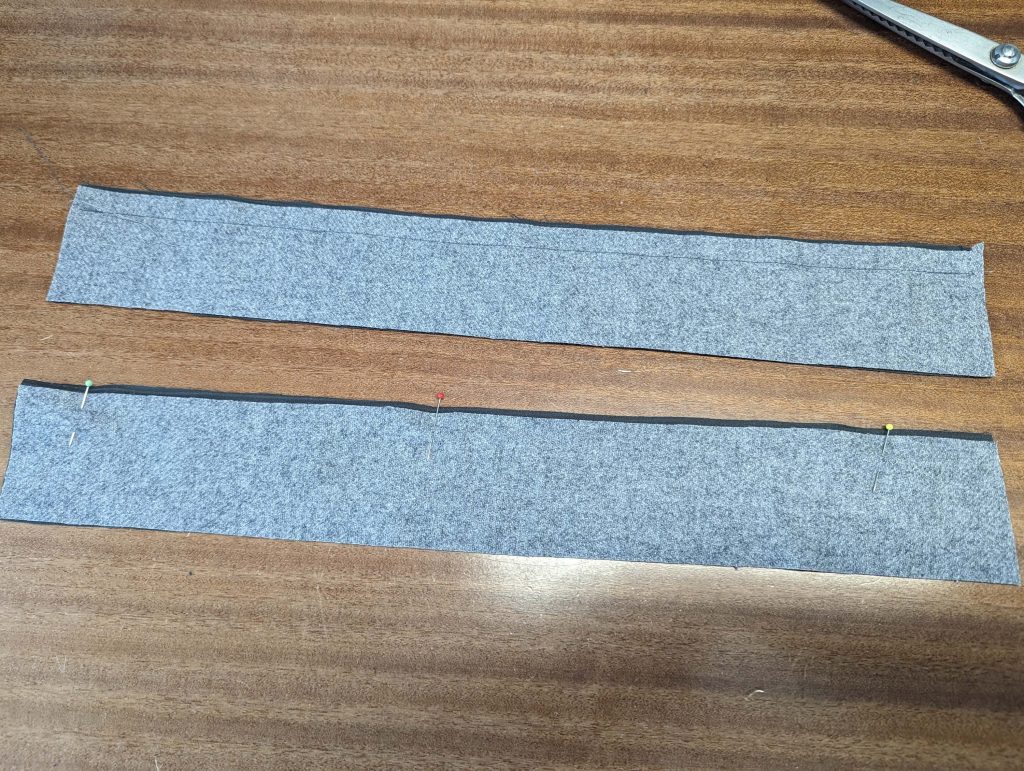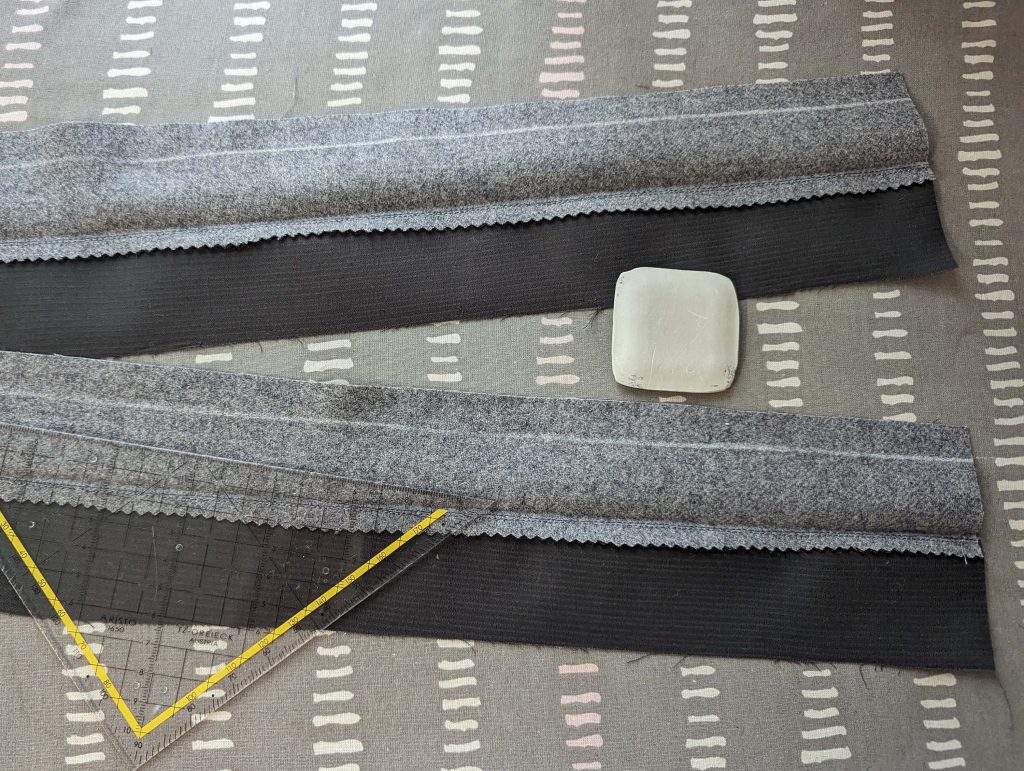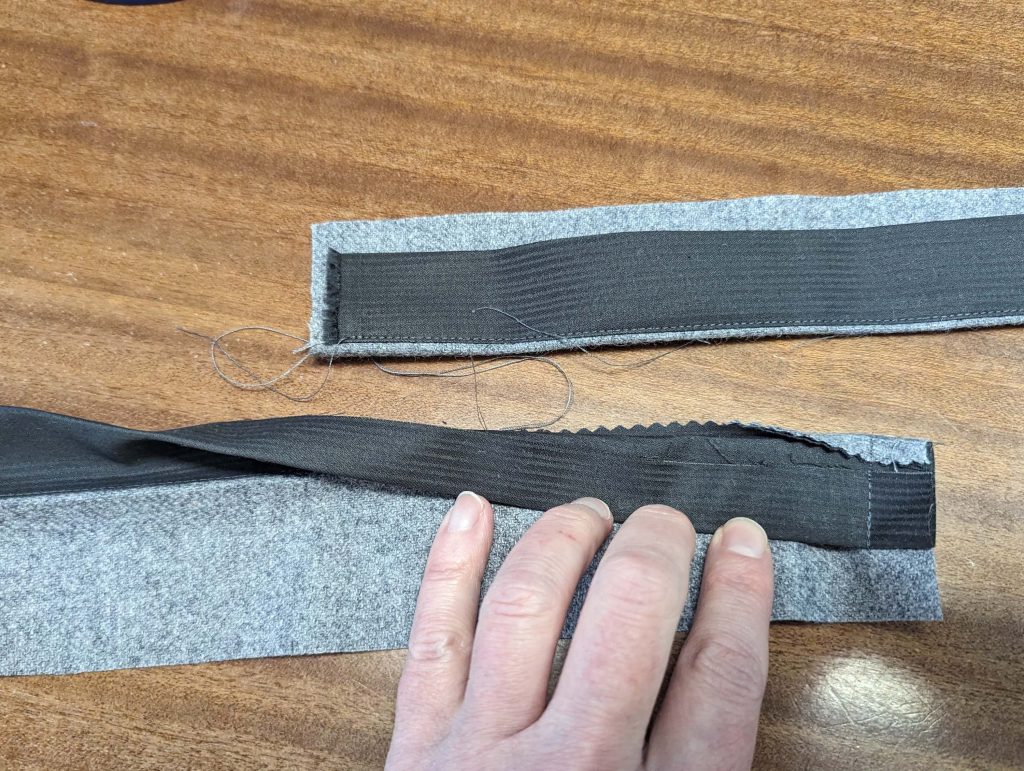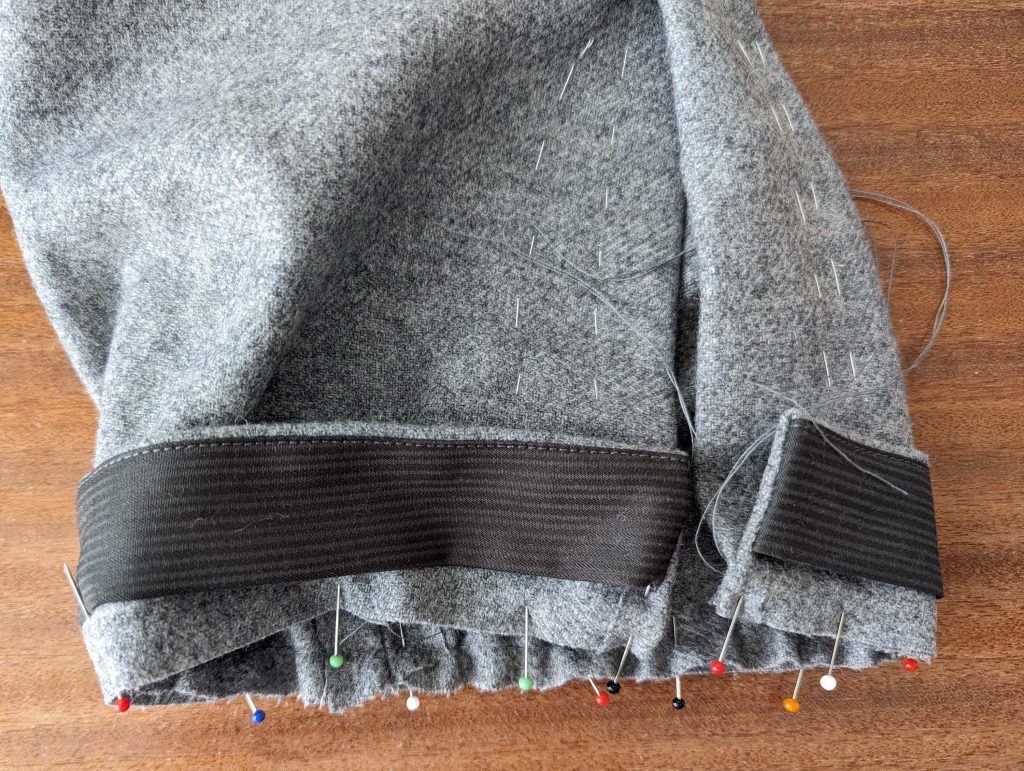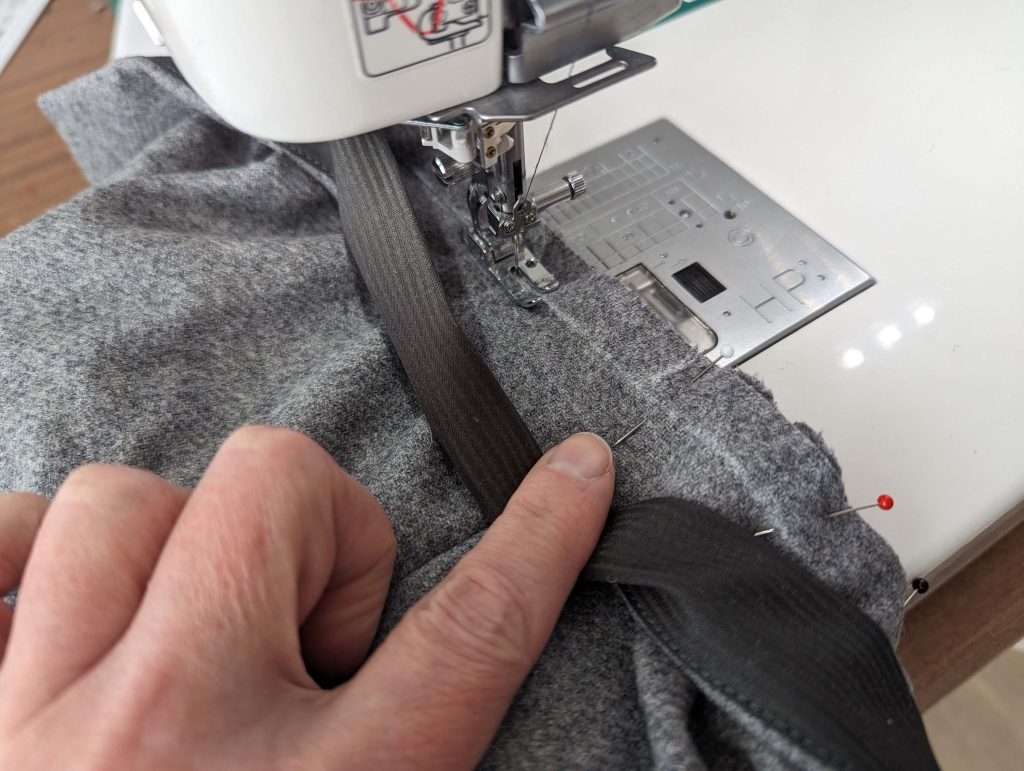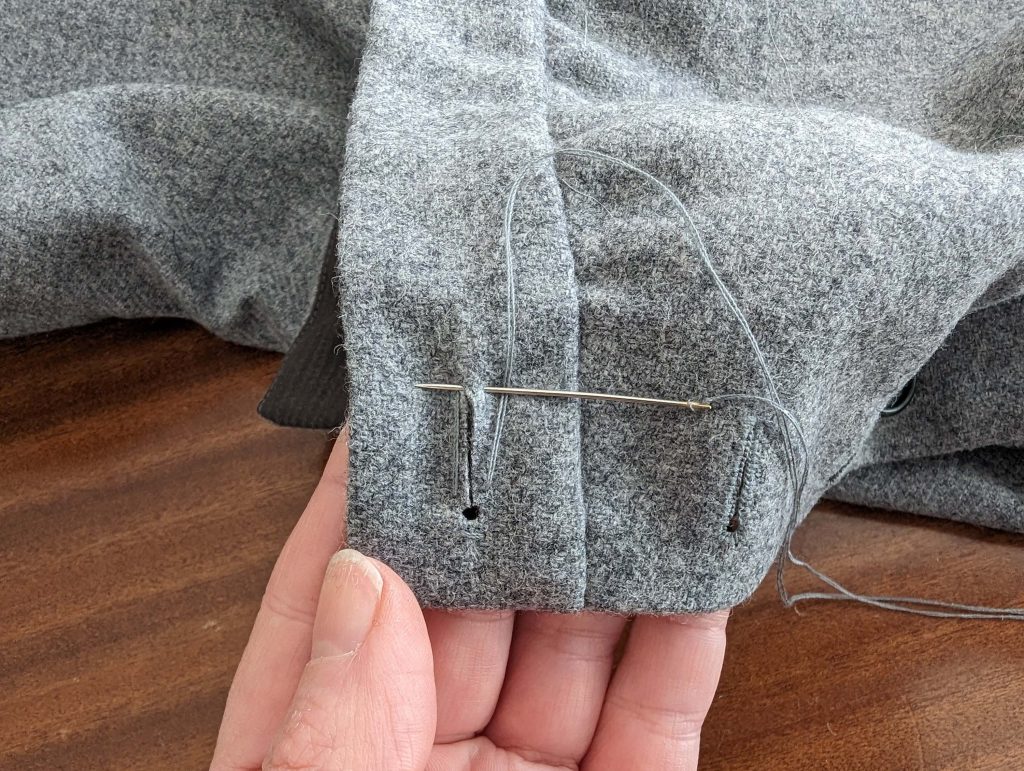Part 1 – Steps (1) to (5)
(6) Side pockets V1 (the accurate way with pattern pieces #5):
Line up the pocket facing (#5b) with the side edges of the top and undersides, right sides together, matching marks (1) and (2). Sew exactly between the marks with a seam allowance of 1/2” (1,3cm) – please ignore the wrong position and material of the interlining, I replaced that later. Trim back the seam allowance of the facing only, slanted at the end of stitching, to reduce bulk, and fold to the side.

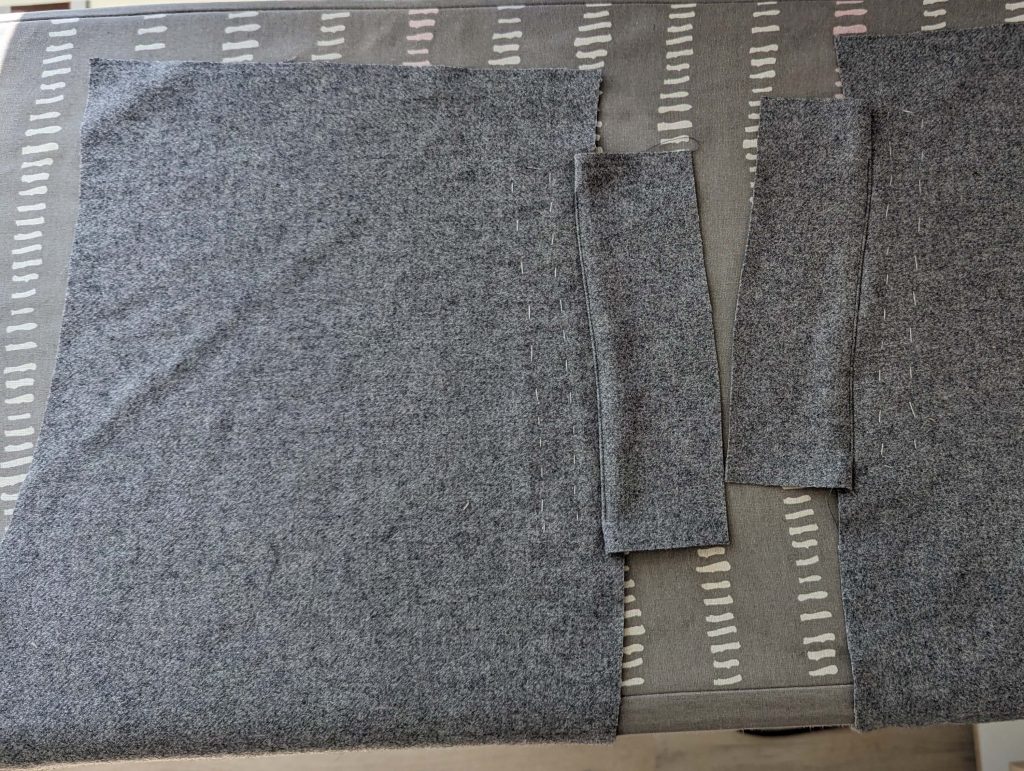
Line up the top and undersides along the side seam, right sides together, matching the marks and sew with a seam allowance of 5/8” (1,5cm). Sew from the top, until reaching mark (4), skipping the pocket opening between (1) and (2) . Notch the seam allowance of the undersides at mark towards the end of stitching and press open the seam allowances.
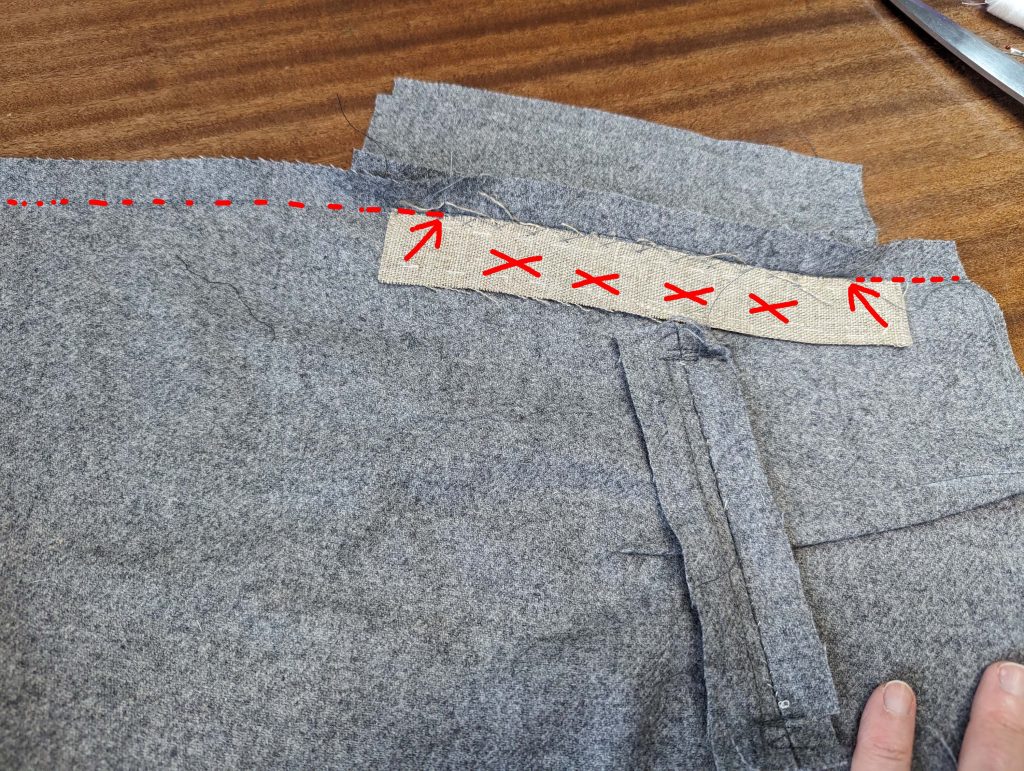
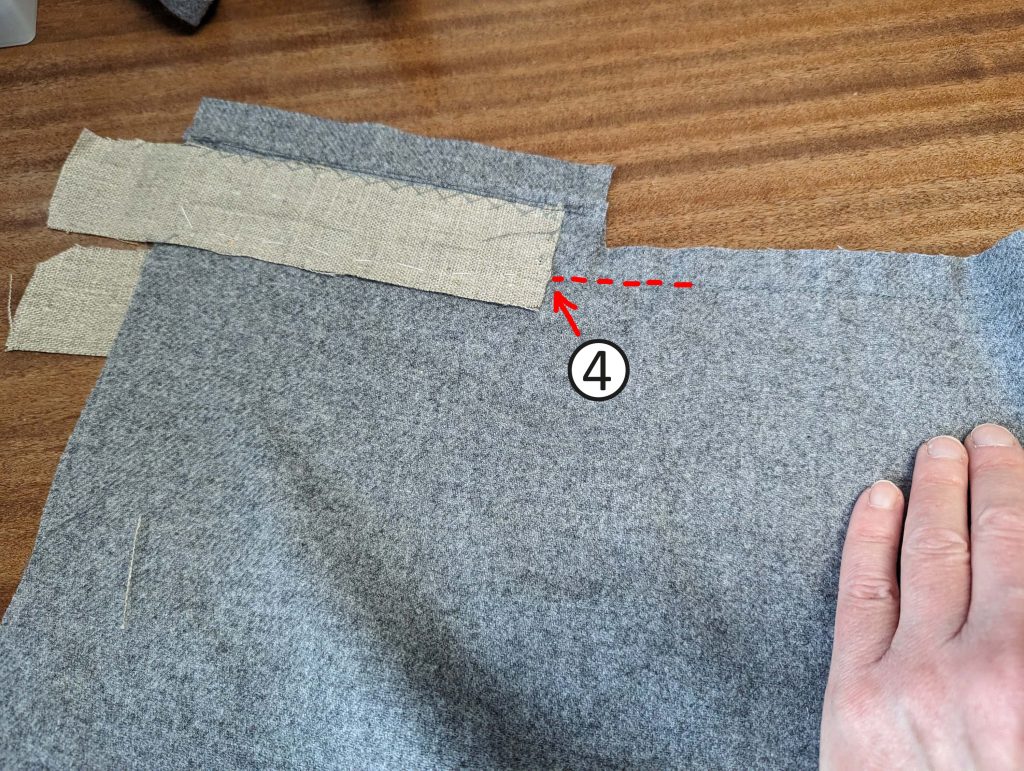
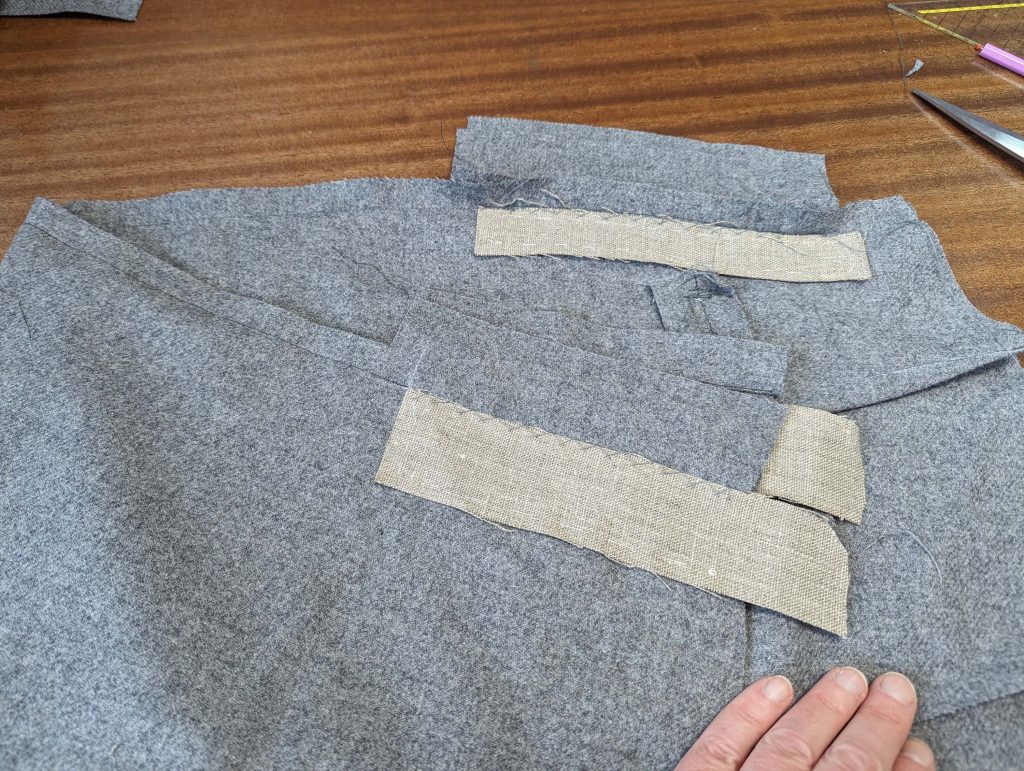

(7) I made this step later, but this would be the better time. Line up the waistband interfacing (#15) with the stitching line along the top edge of the breeches and baste in place. Notch at the side seam and the back corner and place the edges overlapping to reduce bulk. Sew with some catch stitches. On the left side, place the strap underneath the fly placket, reaching out the center front. On the right side, the strap reaches out the center front until the stitching line of the button catch and button catch lining. Catch stitch the interfacing to the trousers along the stitching line of the top edge. Trim back any excess fabric.
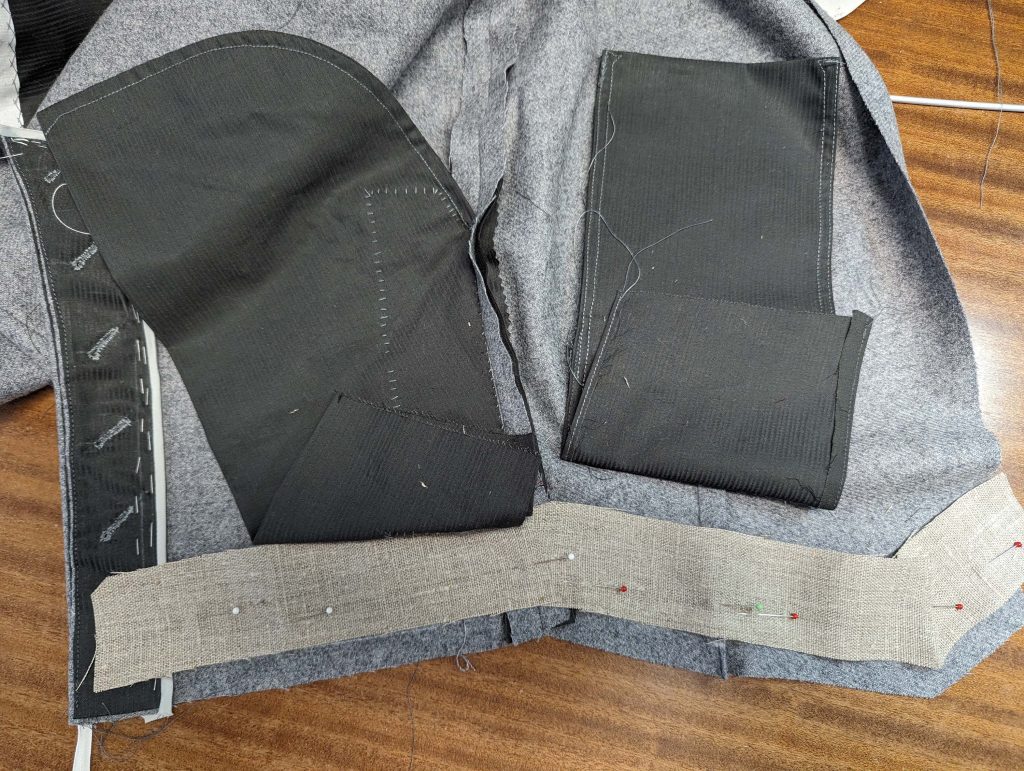
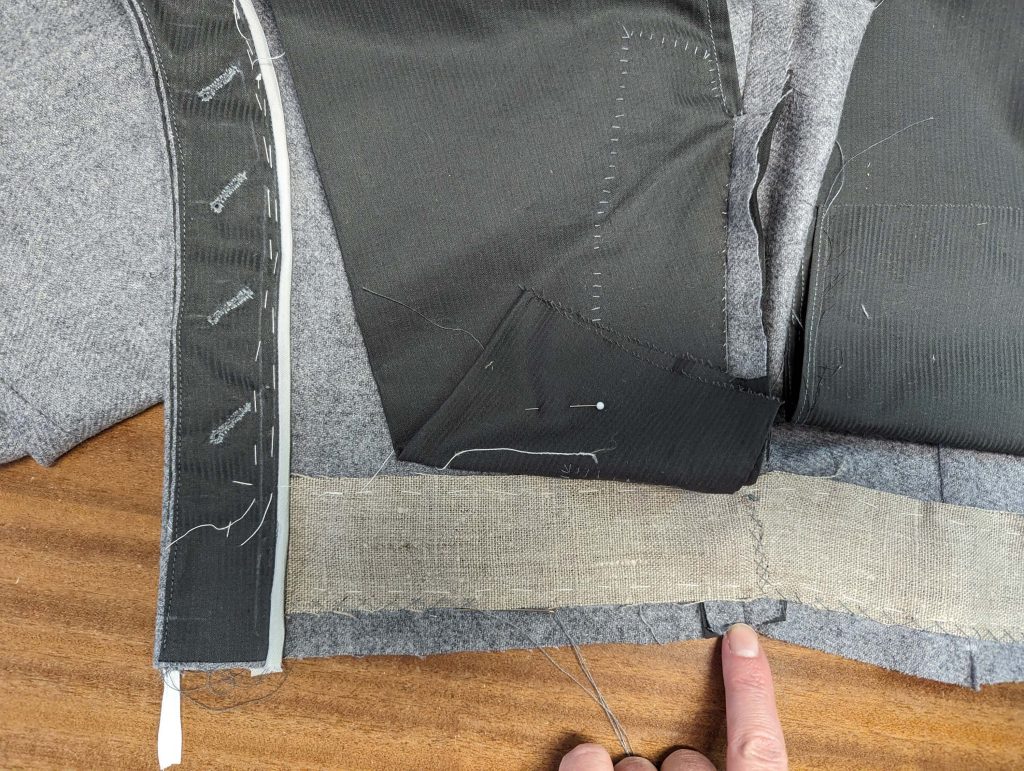
Fold the pocket along the fold line, wrong sides together, and notch towards the point at mark (2). Sew from the fold until reaching mark (2) with a seam allowance of ¼” (7mm). Turn the right way out, turn in the seam allowances from mark (2) to the top, and press. Sew again with a seam allowance of ¼” (7mm).
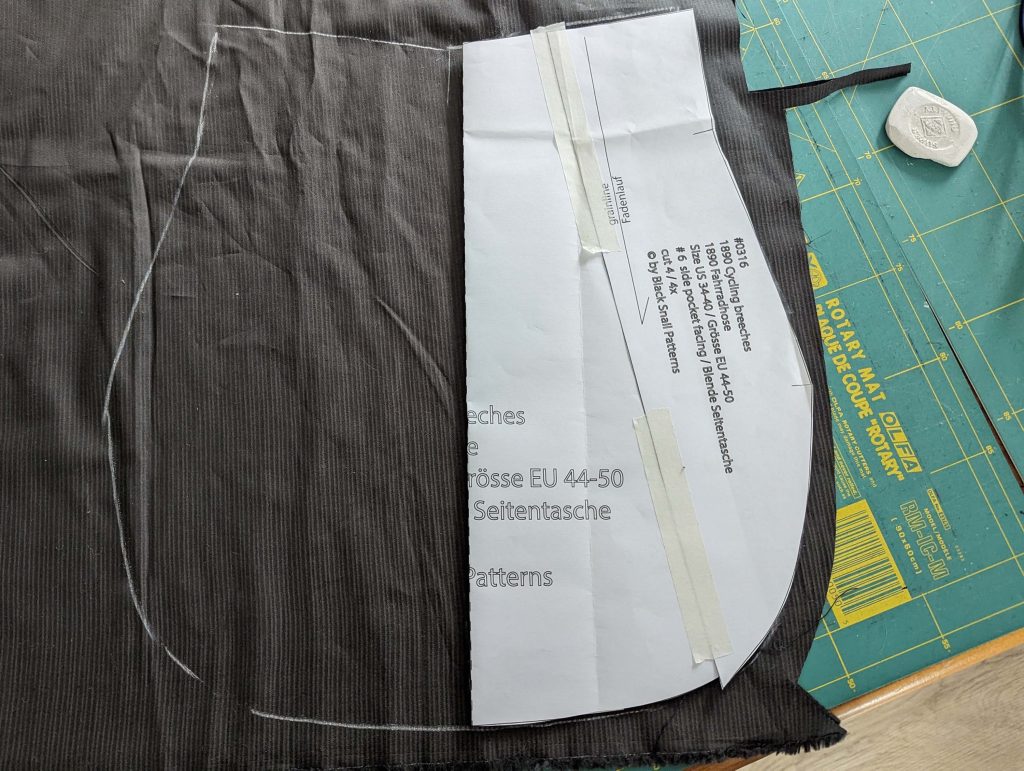
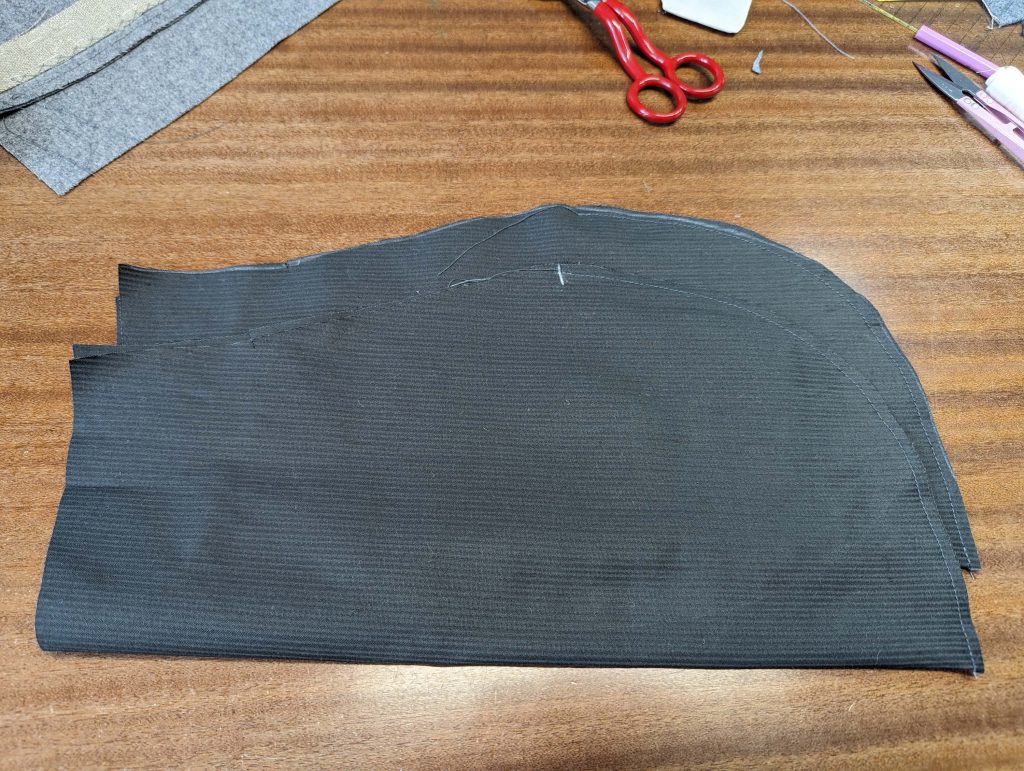
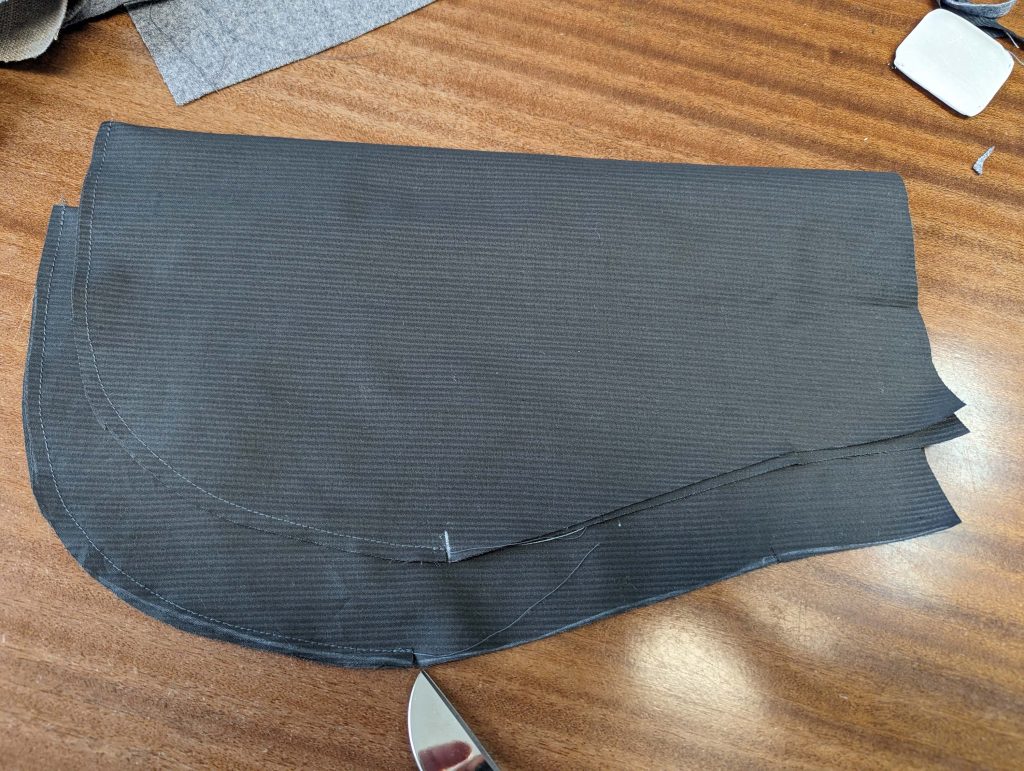

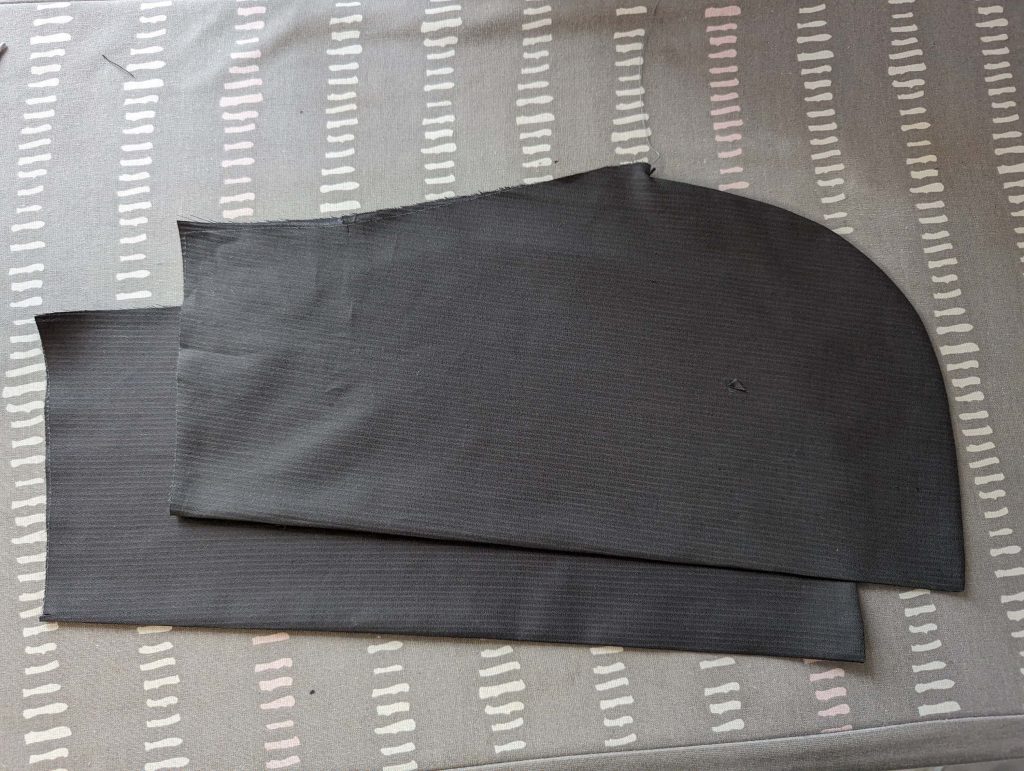

Just to mention, I understitched the facings, which wasn´t I good idea afterward, so I would not recommend it. Please ignore the interlinings – still wrong!
Slide the front layer of the pocket underneath the seam allowance of the front pocket facing, lining up the edge of the pocket with the stitching line, matching the marks. Fell down the pocket along the side seam. Fold the front facing towards the topside and smooth out. First, baste to the front layer of the pocket, then sew along the edges with a blanket stitch. Fold the back pocket facing towards the topside and smooth out, place the back pocket on top, and line up the edge with the side seam/stitching line of the facing, fell down. Baste the facing to the back pocket and sew along the edges with a blanket stitch – this step is a bit tricky.


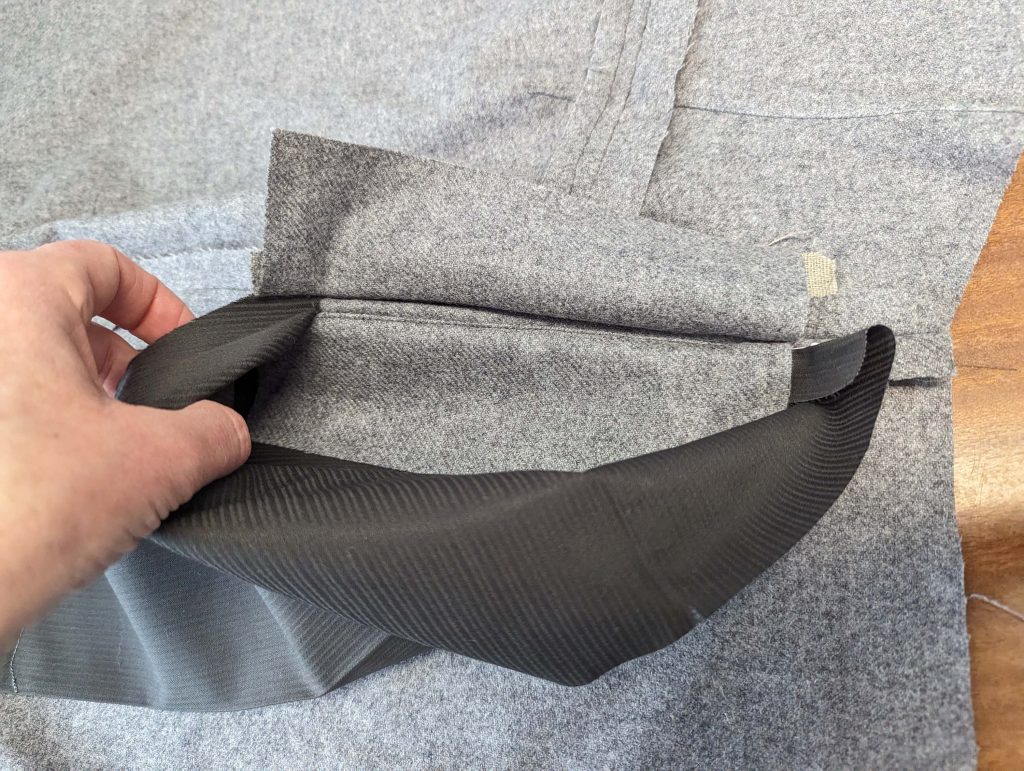
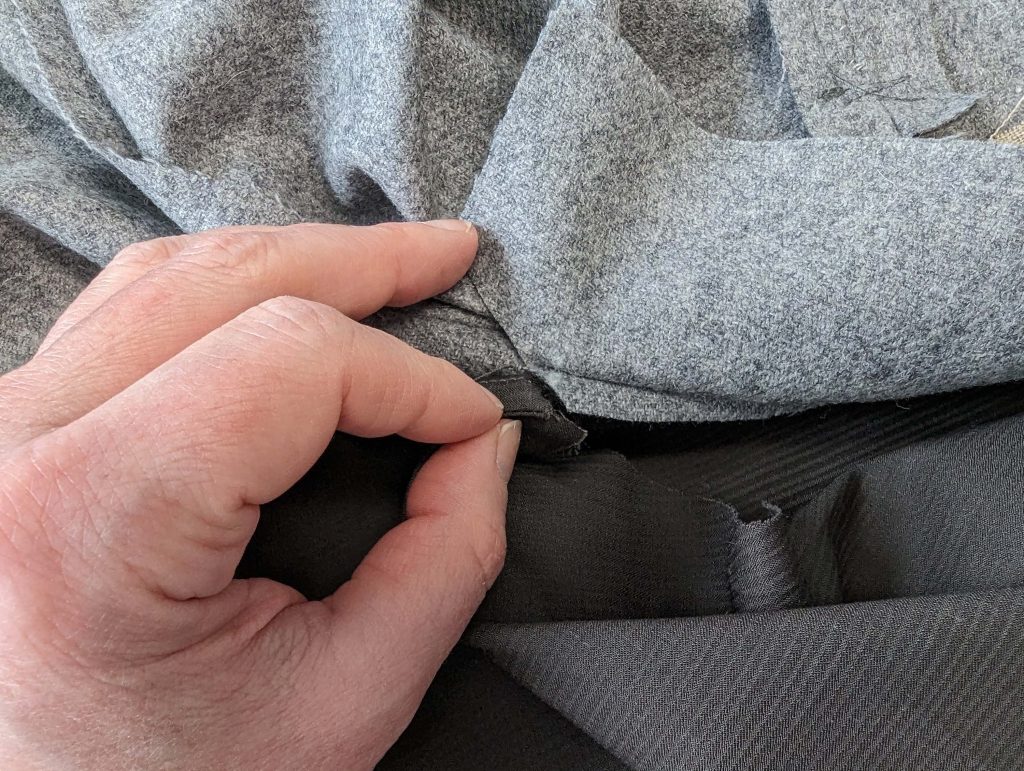
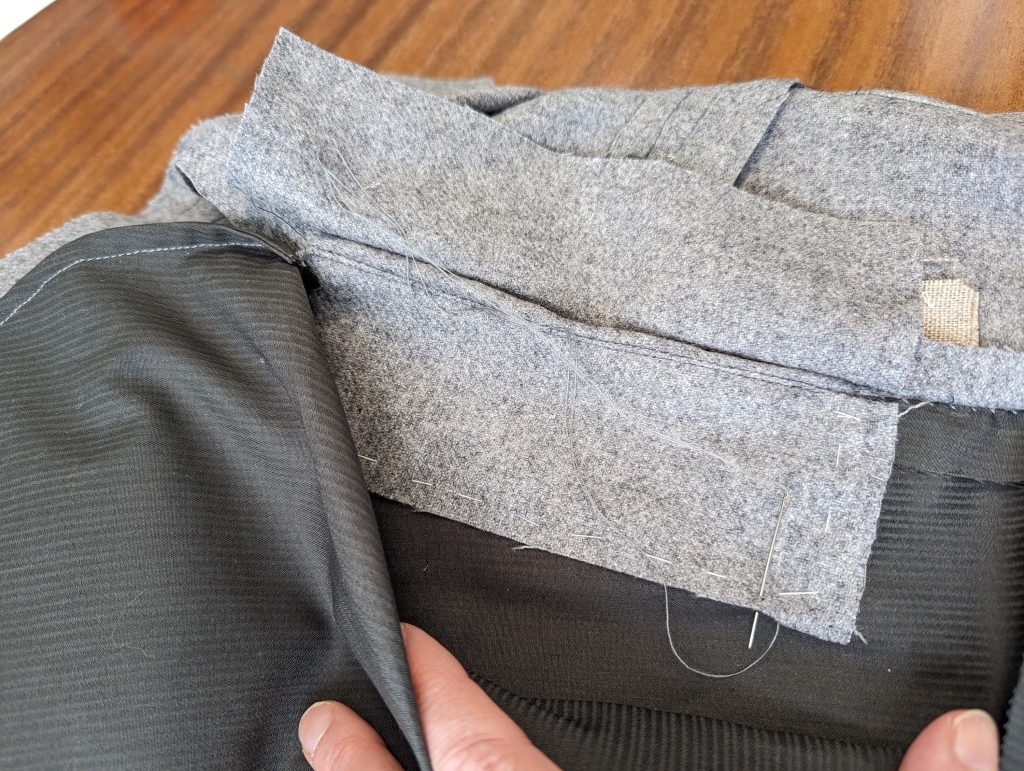

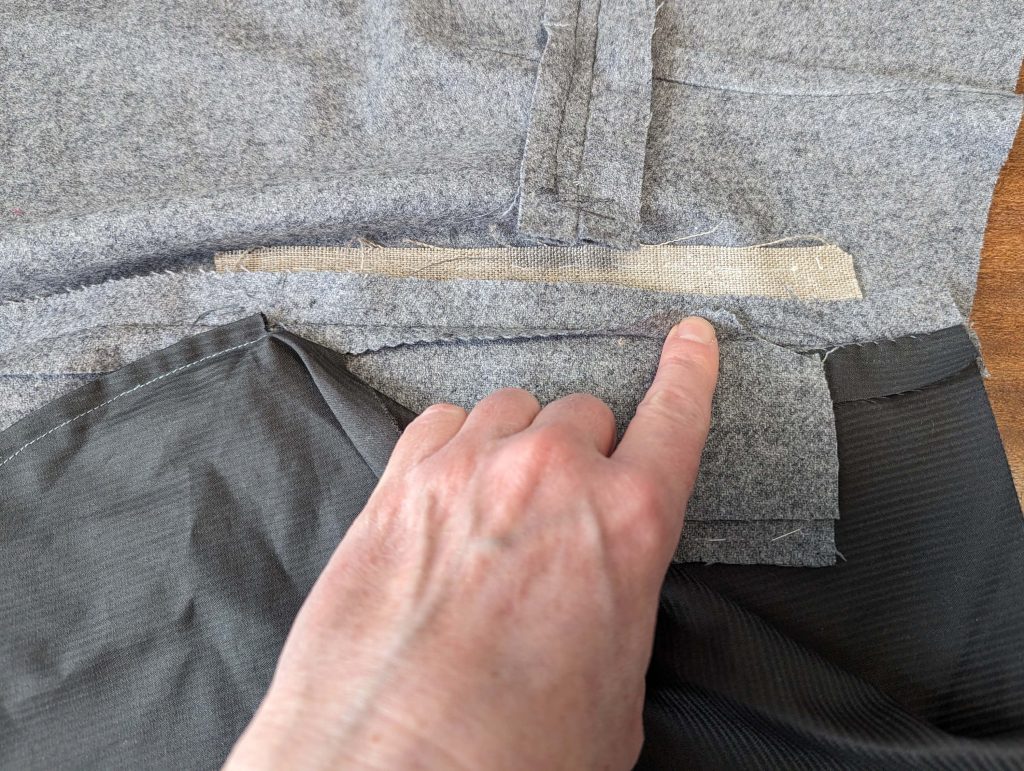

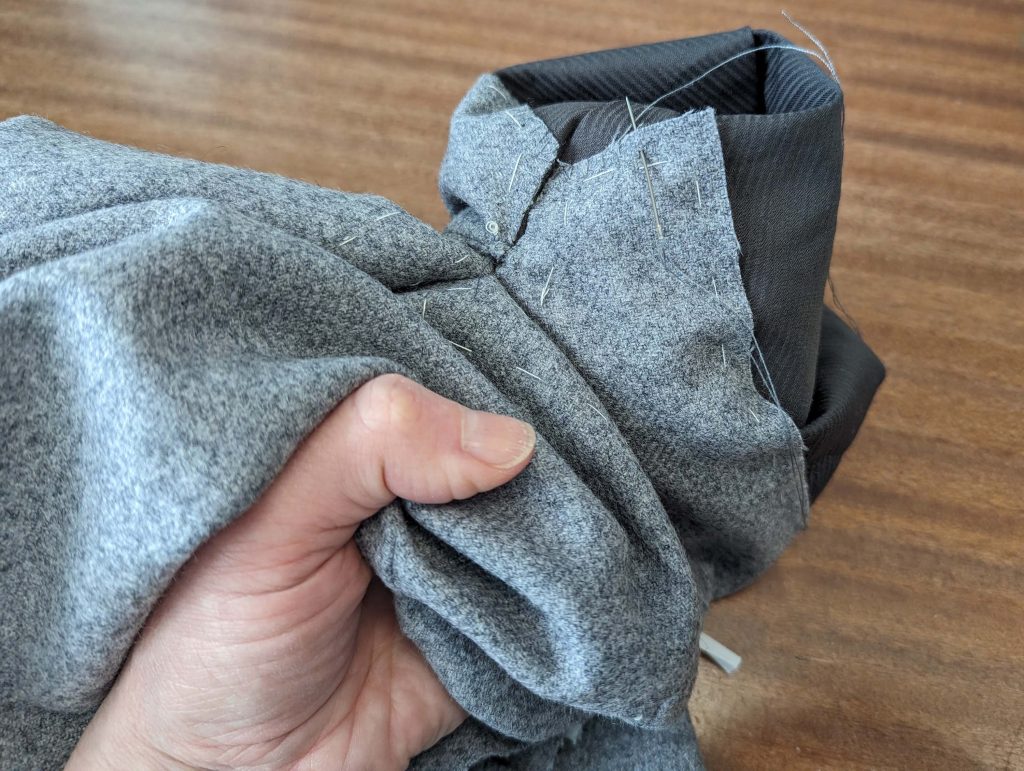
Side pockets V2 (easy in-seam pockets #6): Stitch the facings to the pocket bag, right sides together. Press the seam allowances towards the pocket bag and topstitch from the right side. Fold pocket bag along the dotted line, right sides together. Line up the pocket with the top and undersides, right sides together, matching all marks. Stitch between (1) and (2), with a seam allowance of ½” (1,3mm). Fold the pocket to the side and line up the side seams of the top and undersides, right sides together, matching all marks. Start sewing at the top, until reaching mark (4), skipping the pocket opening between (1) and (2). Press open the seam allowances after notching the undersides at (4). Sew the pocket, without catching the seam allowances of the side seam. Notch the seam allowances of the front pocket layer and fold the pocket towards the topside, smoothing out the seam allowances towards the undersides to avoid bulk. Neaten the raw edges with overcasting stitches – or with the serger as I did.
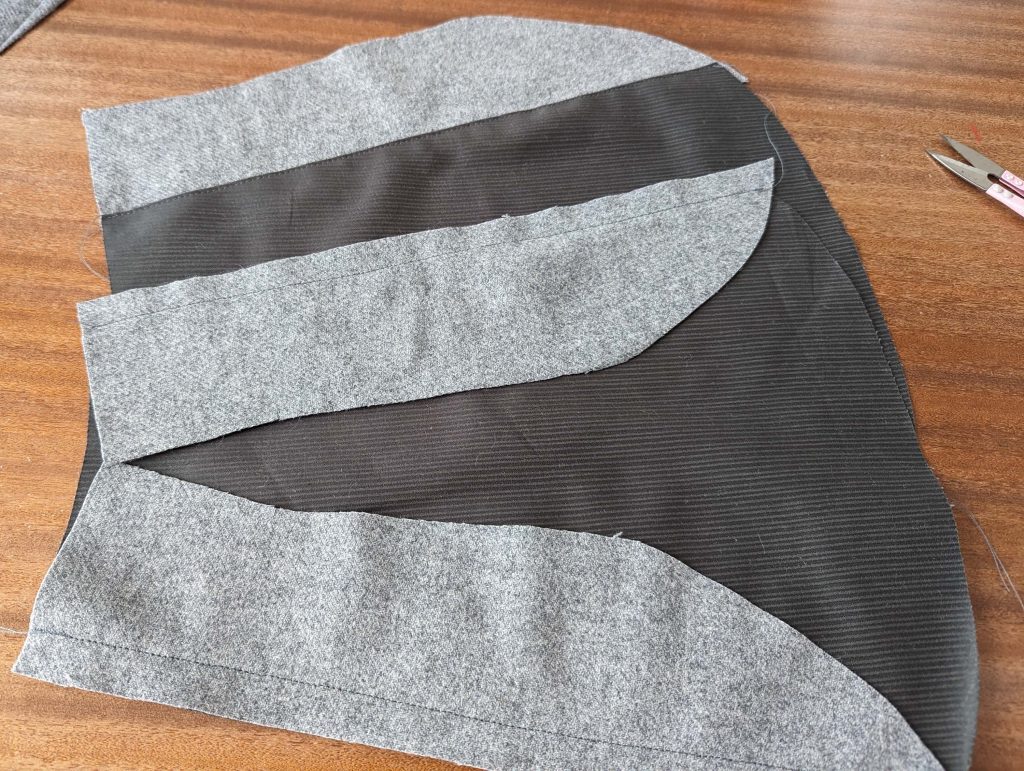
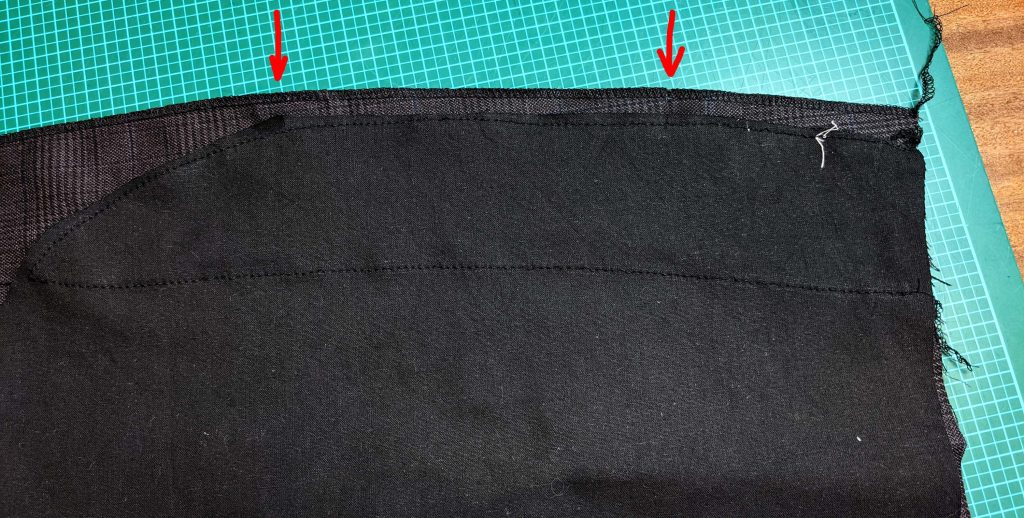



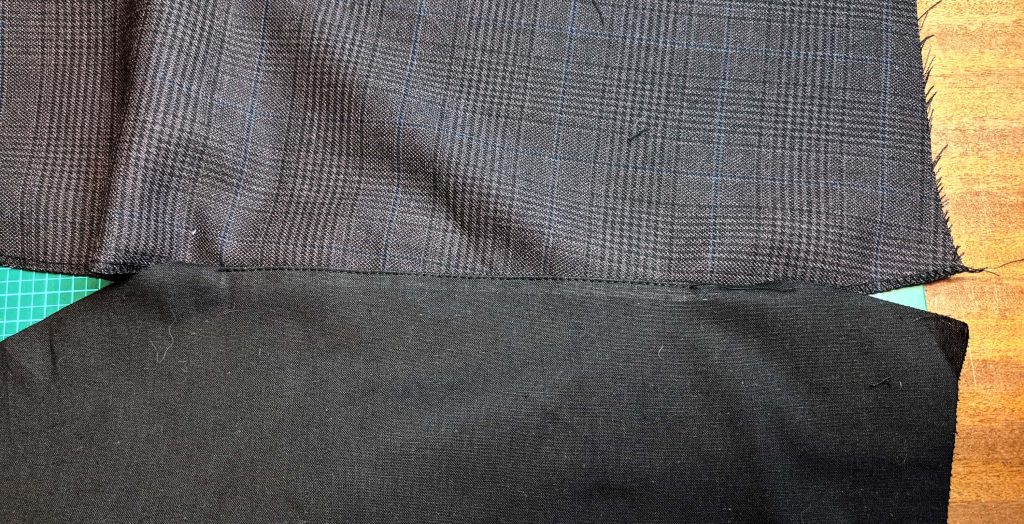
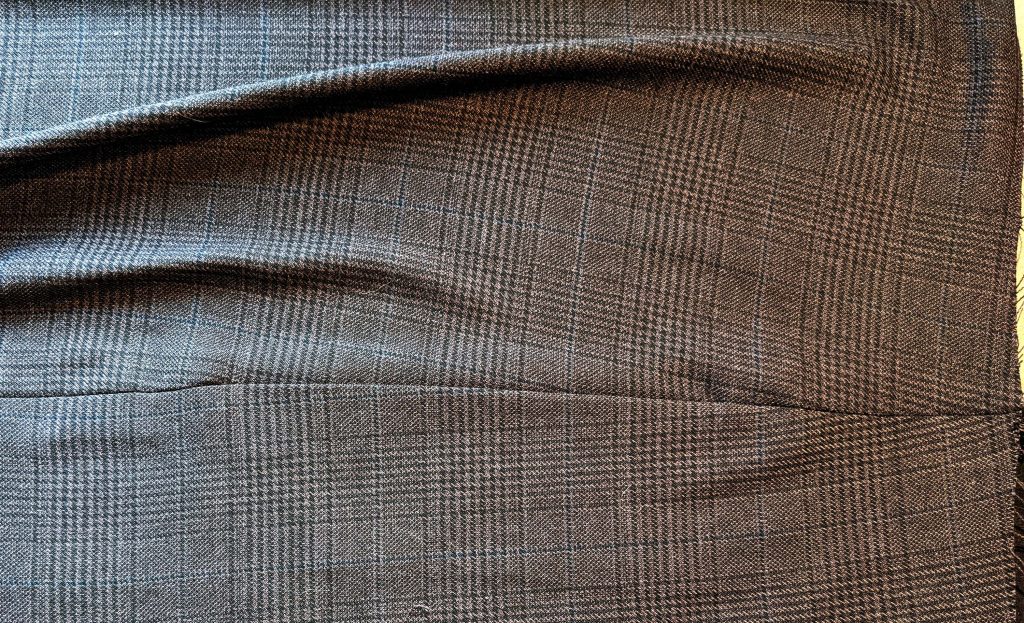
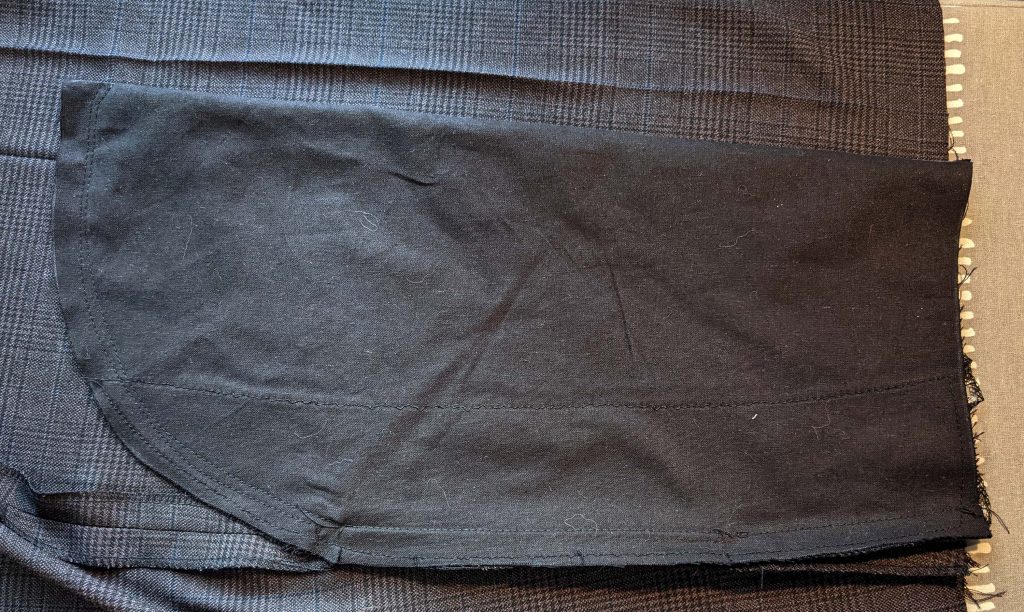

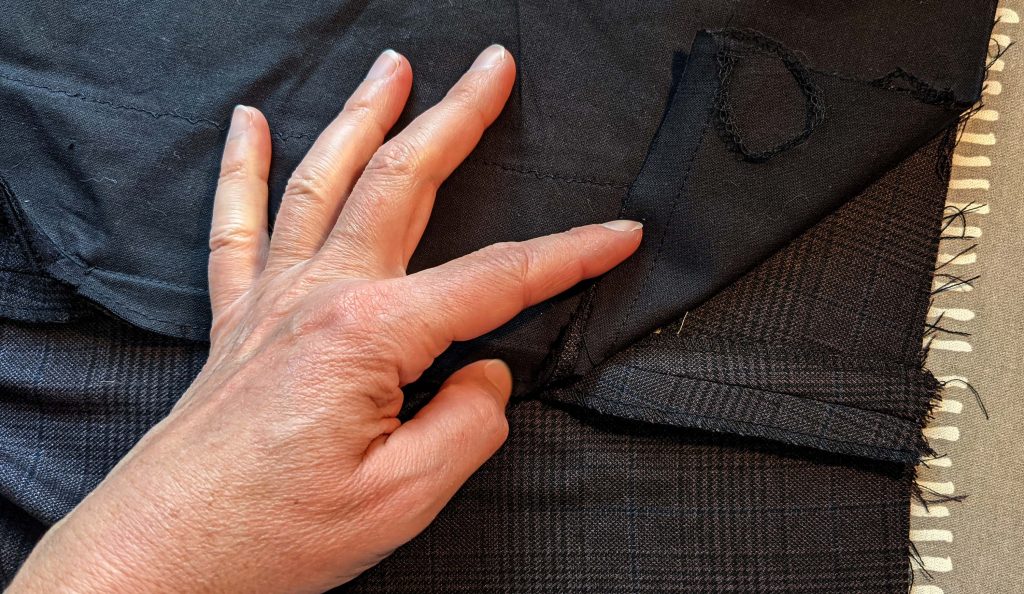
Sew the top edge of the pockets (side and hip) to the waistband interfacing, trim back any excess fabric, extending past the stitching line along the top edge.

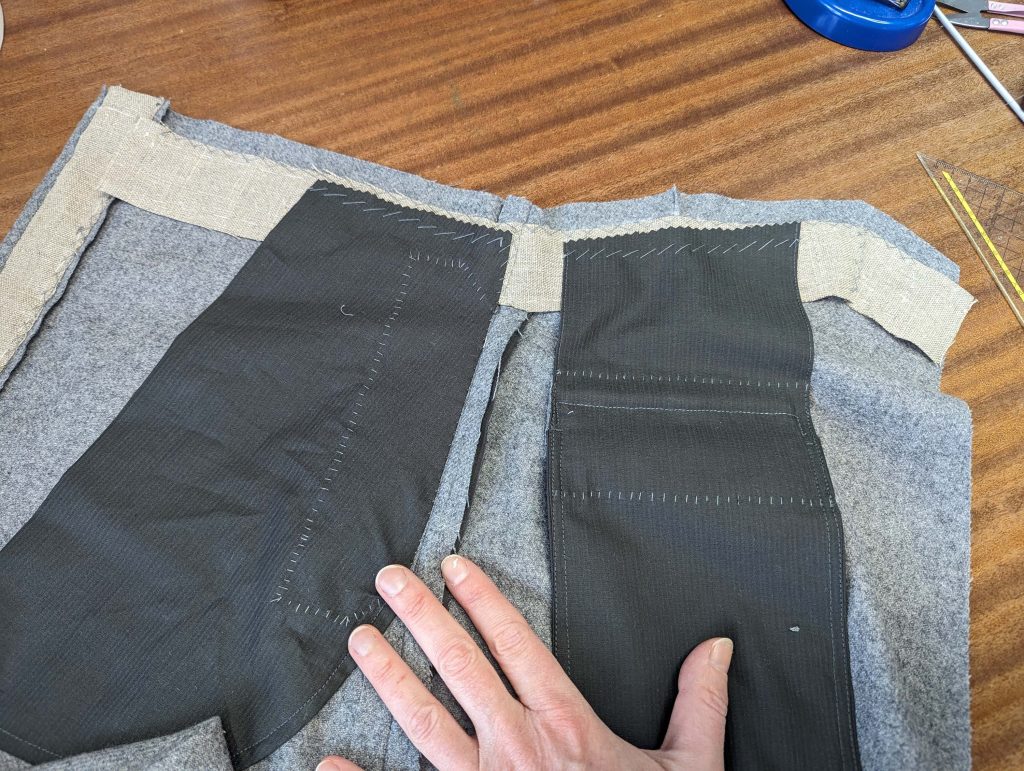
(8) At the vent, after you´ve notched the seam allowance of the undersides at point (4), turn in the plackets along the lines, indicated on the pattern, and baste in place. Sew buttonholes on the topsides as indicated on the pattern. Optionally, neaten the raw edges with overcasting stitches. Again, the order I made all the steps is a bit different in the pictures.
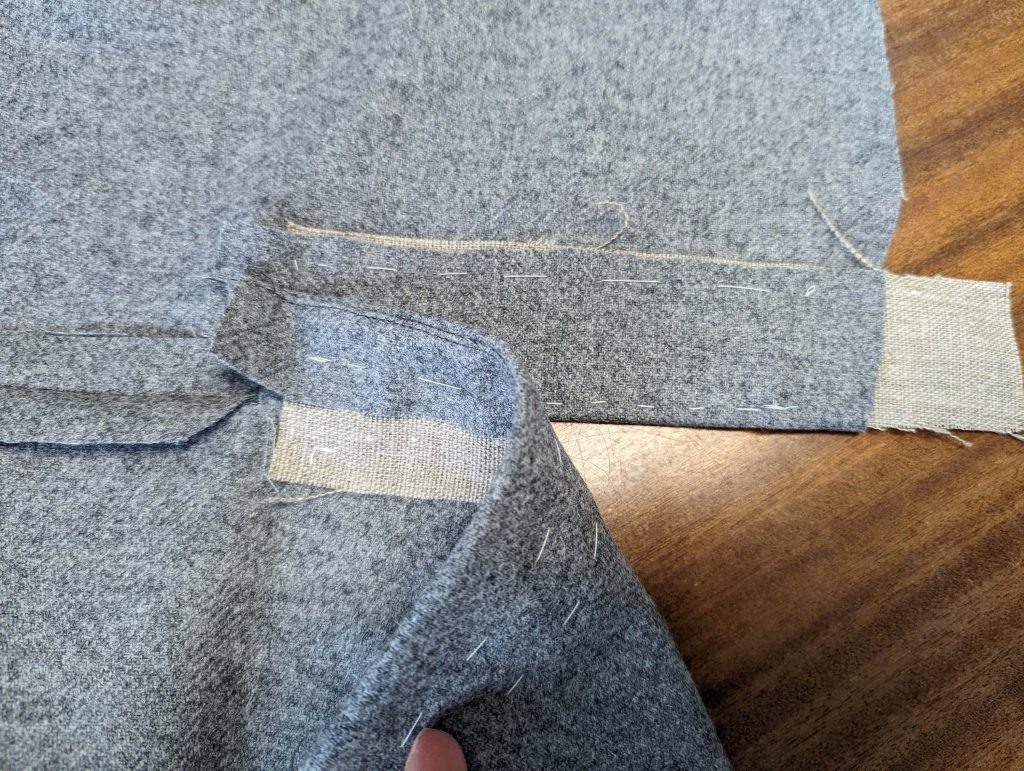
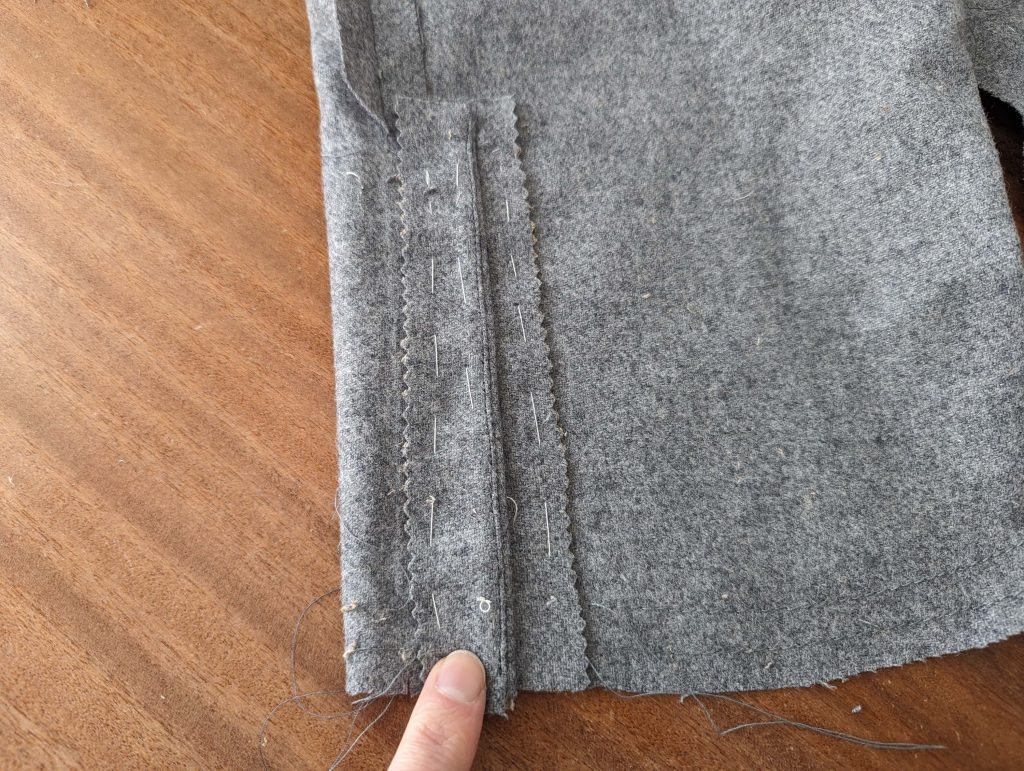
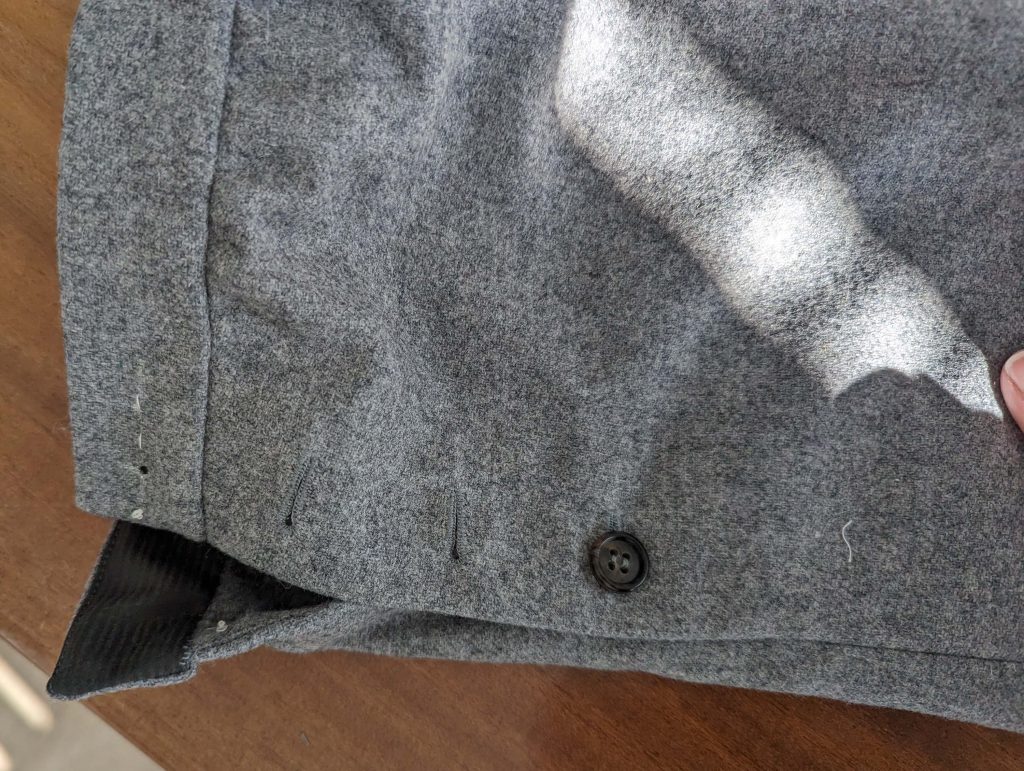
(9) Näh das inner leg seam, right sides together, matching the marks. Press open the seam allowances and turn the right side out. Sew two rows of gathering threads along the bottom edge.
(10) Line up the knee strap with the lining, right sides together, pushing back the edge of the fashion fabric about 1/8” (2mm) for the turn of cloth. Sew along the bottom edge. Press the seam allowances towards the lining, and understitch from the right side. Fold the two layers with the wrong sides together and press along the top edge, rolling the seamline slightly towards the garment’s wrong side, and reopen. Turn in the seam allowance of the lining along the top edge, taking care to get an even-shaped knee strap. Now, fold the two layers with the right sides together, turn the top edge’s seam allowance towards the lining, and sew along both short edges with narrow stitches. Trim back the seam allowances and turn the knee strap the right way out. Press and mark the stitching line on the strap’s wrong side along the turned-in edge of the lining (arrow).
Sew the knee strap to the leg, right sides together, and match the marks. Pull the gathering threads to fit the knee strap, ensuring the leg lays flat at the placket. On the inside, attach the knee band with a felling stitch along the stitching line. Sew a buttonhole at the strap.

